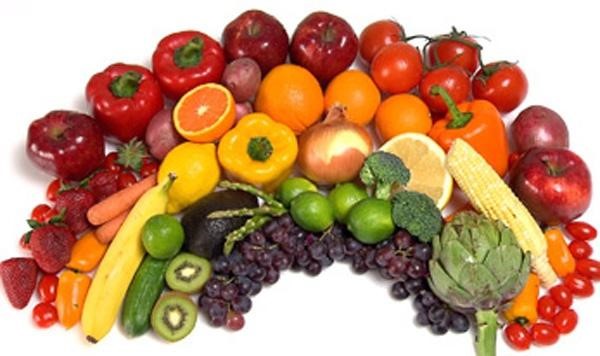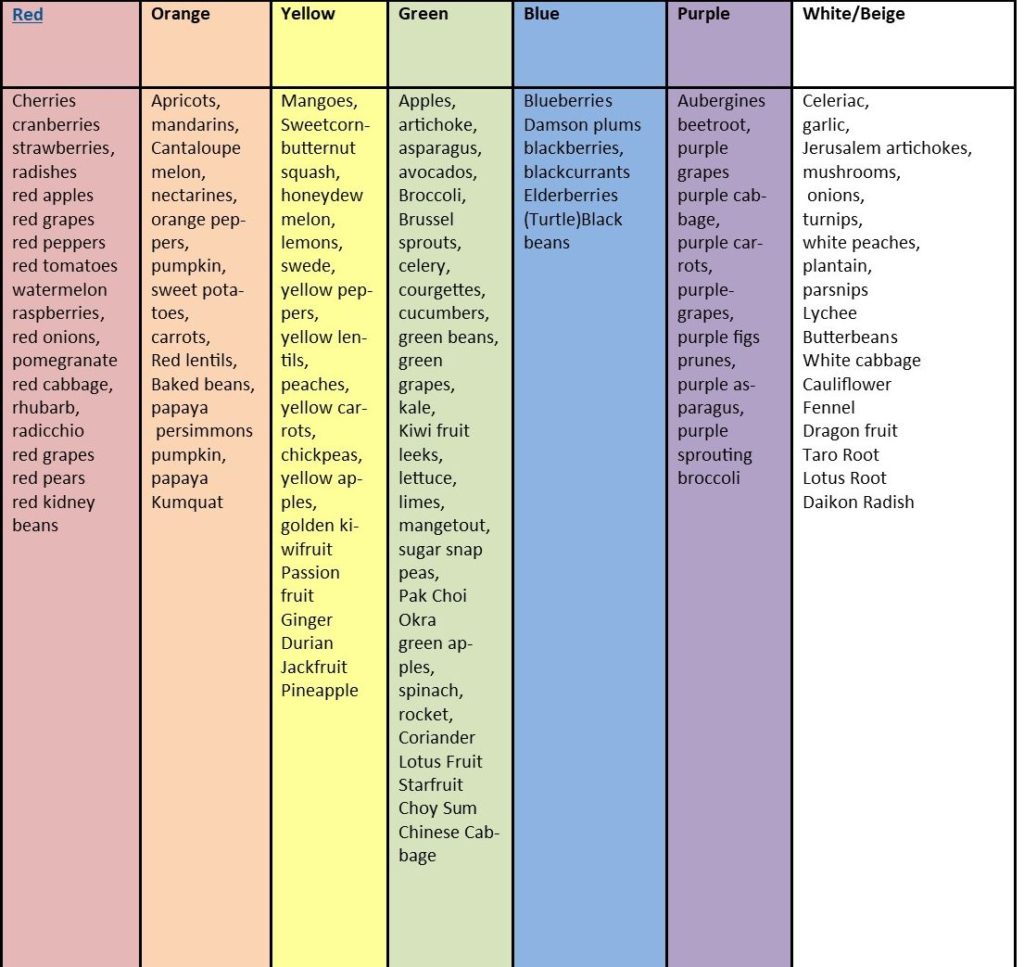To view our Privacy Policy please click below


Supporting the North West Centre for Heart & Lung Transplantation
Organ Donation Week. Food Challenge:

To eat 20 types of fruit and veg during the month of September
Fruit and vegetables should make up about one third of what we eat each day. Aim to have at least 5 portions of a variety of fruit and vegetables a day. Variety is important! Different types and colours of fruits and vegetables contain different combinations of important nutrients, like fibre and vitamins, which our bodies need to stay healthy. So, to get the most nutritional benefit out of your 5 A DAY, try to have a wide variety of fruits and vegetables from each of colour of the rainbow – red, orange, yellow, green, blue, purple, and white.
Help us create a rainbow for Wythenshawe Hospital Transplant and VAD unit. Please send photos of the different fruit and vegetables you’ve eaten in September to : lyndaellis@newstartcharity.org
We’ll cut out the pictures and create a rainbow for the unit to reflect the diverse range of people who require a transplant and for the hope the rainbow icon instils in us.
Use the list below to help you eat a rainbow of fruit and vegetable:

Tips to help you eat more fruit and vegetables:
Morning:
- Add fresh, tinned or dried fruit to your breakfast cereal, porridge or to a portion of low fat natural yogurt.
- Try mashing a banana and mixing it into your porridge – this still provides sweetness, without having to add sugar, honey or syrups.
- Add grilled tomatoes or mushrooms to some scrambled eggs.
- Have a piece of fresh fruit as a morning snack.
- Have a glass (150ml) of unsweetened 100% fruit/vegetable juice or smoothie (but remember, combined, this will only count as a maximum of one portion of your 5 A DAY).
Afternoon and Evening:
- Always include fruit and/or vegetables with each meal.
- Have a side salad with your main meal or add salad like lettuce, cucumber, and/or tomato to your sandwiches for extra crunch! Avoid high fat dressings.
- Add plenty of vegetables to soups, stews, curries, pasta, and rice dishes (you could even add some frozen vegetables to your rice!)
- Add extra vegetables (or fruit) to a thin based pizza – try mushrooms, peppers, onions, tomatoes, pineapple or sweetcorn.
- Have a side of vegetables with your main meal – peas, broccoli, cauliflower, carrots and cabbage are great with a roast dinner, shepherd’s pie or stew.
- Try adding other vegetables like peas, carrots, spring onion, sweet potato or swede to your mashed potatoes.
- Add grated carrot or courgette to your pasta sauces like bolognaise, or stews and curries.
Snacks:
- Try replacing your usual snack with vegetable sticks like carrot, cucumber or celery (you could dip these into some low fat hummus to make your snack a bit more exciting).
- Instead of crackers or toast with cheese, why not mix it up and try avocado on a slice of wholemeal toast, or rice cakes with some low fat hummus and tomato slices!
- Swap sugary snacks, like biscuits, for a piece of fruit.
- Instead of a sweet pudding, why not try low fat natural yogurt, topped with chopped banana, strawberries and a sprinkle of seeds or nuts.
Top Tips:
- Texture – If someone in your family doesn’t like the texture of chopped vegetables, try grating carrots or courgettes into your food to add flavour. Or make a soup or sauce with added vegetables and blend until smooth.
- Seasonality – Try a new fruit or vegetable each week to increase variety. Why not pick seasonal fruits and vegetables* which can often be cheaper.
- Fruit juice – Have a glass (150ml) of unsweetened 100% orange juice with fortified cereal for breakfast – the vitamin C in orange juice can help the body absorb iron from the cereal.
- Frozen varieties – Frozen fruit and vegetables can contain just as many nutrients as fresh. Indeed, as they are frozen rapidly after harvest, they may contain more of some vitamins than fresh vegetables that are a few days old. They could also help you reduce waste as they keep much longer and are more economical as you only have to cook what you need.
- Tinned varieties – Choose tinned fruits or vegetables in natural juice or water, with no added sugar or salt.
What is a portion?
A portion of fruit or vegetables is 80g. This is around:
- 1 medium sized piece of fruit such as a banana, apple, pear, orange or nectarine
- Half of a large grapefruit or avocado
- 1 dessert bowl of salad
- 2 or more small fruits such as plums, satsumas, kiwi fruit or apricots
- A large handful of berries, cherries or grapes
- 2 broccoli spears
- 3 heaped tablespoons of peas, carrots or sweetcorn
- 4 heaped tablespoons of cooked cabbage, spinach or curly kale
Dried fruit:
- One portion of dried fruit is 30g, and this can count as a portion of your 5 A DAY.
- You only need 30g of dried fruit because the portion size is based on the weight of the fresh fruit.
- This is equivalent to around one heaped tablespoon of dried fruit such as raisins, cranberries or sultanas
- Dried fruit can stick to teeth, which may lead to tooth decay, so it’s best to keep dried fruit to mealtimes and not between meals.
Juices and Smoothies:
- 150 ml glass of unsweetened 100% fruit or vegetable juice or smoothie counts as a maximum of 1 of your 5 A DAY.
- Have no more than a total of 150ml per day from juices and smoothies combined. This is because when a fruit is juiced or blended, sugars are released which can cause damage to teeth.
- No matter how much you drink, only one 150ml portion will count as one of your 5 A DAY.
Beans and pulses:
- One portion of any ‘pulse’, such as beans, peas or lentils, is 80g.
- This is equivalent to three heaped tablespoons.
- No matter how much you eat, pulses will only count as one of your 5 A DAY.
Useful websites:
https://www.bhf.org.uk/informationsupport/heart-matters-magazine/nutrition/5-a-day/colourful-foods
